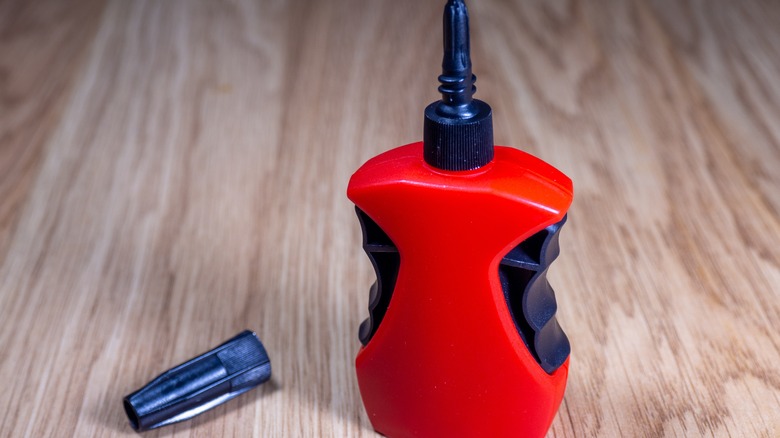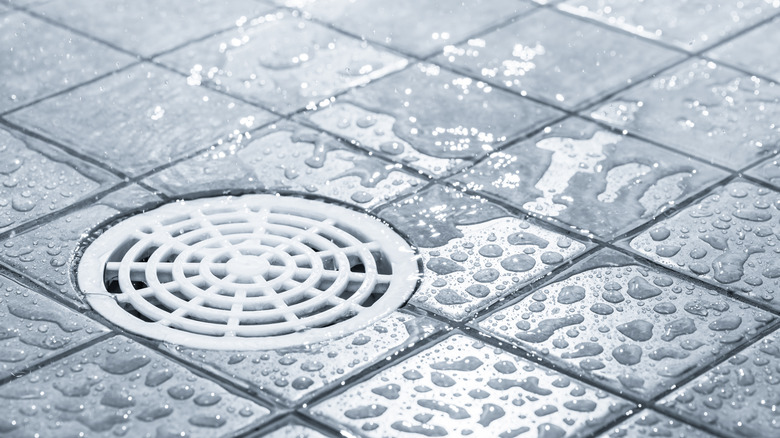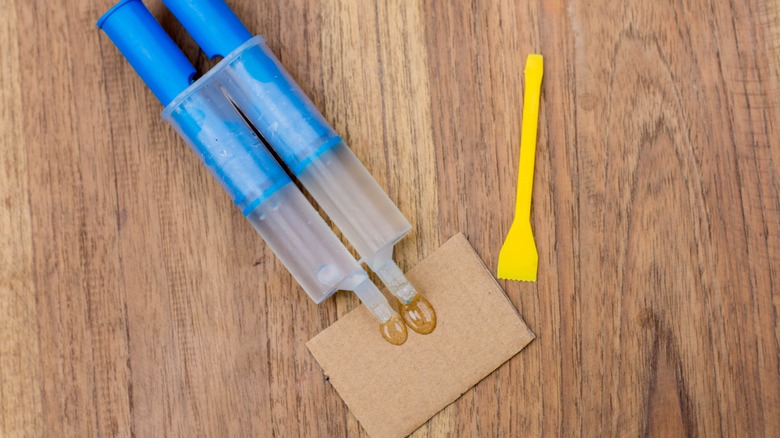When You Should (And Shouldn't) Use Super Glue In The Bathroom
If you're a fan of a certain breakfast cereal, you probably enjoying hearing the sounds "snap," "crackle," and "pop" at breakfast ... unless the sounds are coming from the handle snapping off your favorite coffee mug or the lid of your blender cracking mid-smoothie. Fortunately, a few drops of super glue can keep these morning mishaps from ruining your day. Given the glue's success with mending mug handles and bonding broken blenders, you might be tempted to use it for bathroom repairs. While it's a viable go-to for minor fixes and emergency patches — like a chipped tile or a cracked shower caddy — other adhesives work better for most bathroom jobs.
Super glue is composed of an acrylic resin called cyanoacrylate that forms strong and nearly instantaneous bonds through a chemical reaction called polymerization. Water (from moisture in the air) acts as a trigger that causes cyanoacrylate molecules to link up and form long polymer chains, turning the liquid glue into a solid. Because water initiates this curing process, it's best not to store super glue in the bathroom or other humid locations. The elevated moisture in the air can cause the glue to harden inside the bottle or tube, so keeping the bottle in a dry location will help extend the life of your super glue.
When to use super glue for bathroom repairs
Since super glue cures quickly in humid environments, it's good for fast fixes in the bathroom. But not all super glue formulas are created equal, and most of them will degrade when exposed to long-term moisture. Some formulas include additives that make them more water resistant, so it's important to read the specifications on the packaging or manufacturer website. There are also industrial cyanoacrylate glues designed for underwater applications, but they are expensive and not sold at home improvement stores. While it's probably fine to use super glue in bathroom locations that get wet occasionally, it's not a great adhesive for materials that are constantly exposed to water.
Super glue is available in liquid and gel forms. Gels, which have added silica, work well for porous surfaces like porcelain, so they're great for fixing small chips in toilet tank lids or sink edges. Because gels are less drippy, they're also a viable choice for vertical applications, like reattaching small pieces of broken tile to shower walls. Although super glue isn't great for filling gaps, it can be used in a pinch for temporarily sealing small cracks in bathroom sinks to keep them from spreading. Of course, you can always use super glue to repair decorative items in the bathroom, like picture frames and vases, just as you would in other parts of your home. If you need to clean up any drips or excess glue, nail polish remover is a great trick.
The adhesive you should use for bathroom repairs instead of super glue
Two-part epoxy is the best overall adhesive for bathroom repairs. It comes in a variety of formulations for different applications, and it is one of the few adhesives that can be used to fill gaps. Like super glue, epoxy forms very strong bonds, but it is more water resistant, and some formulas are even designed for underwater applications. Two-part epoxy includes a separate resin and hardener that must be mixed together during the application process to activate polymerization.
Epoxy is excellent for repairing larger cosmetic cracks in porcelain fixtures like toilet tank lids and sinks, as well as shower and floor tiles. You can also find clear-drying epoxy that is specifically formulated for fixing cracked or broken mirrors, shower doors, or light fixtures. Epoxy putty is a fast way to repair leaking pipes. It has a dough-like consistency before it hardens, and its malleability makes it great for filling holes. It can be used on both metal and PVC pipes. If you're unsure when to use epoxy versus other adhesives, this chart from MIT can help you determine the best glue for your job. And if you can't find that tube of super glue in your junk drawer or toolbox, you can always use epoxy to mend mug handles and bond blender lids.


